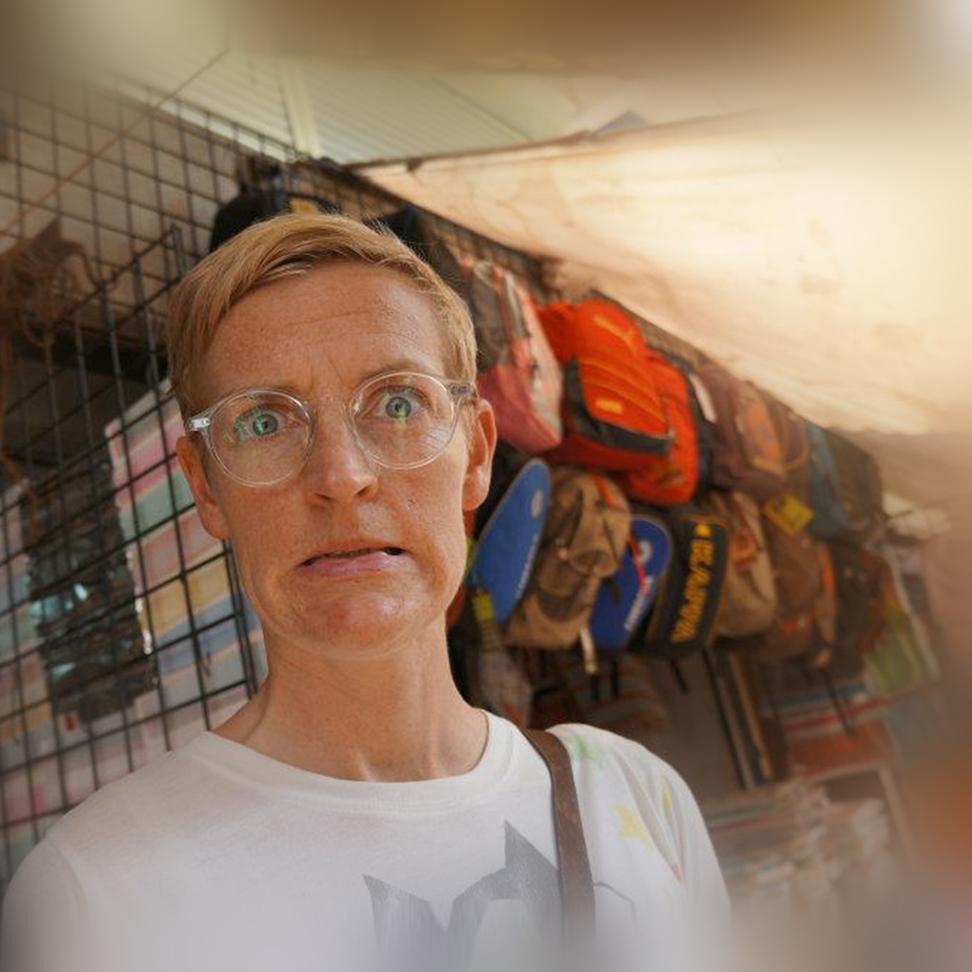If you’re one of the millions of people enjoying the second season of Planet Earth, then you’re probably wondering if all those amazing places even exist, and if they do, well, there’s no way you can visit them, right? Well, you might be surprised …
We’ve chosen 13 amazing places from all Planet Earth episodes, one for each featured habitat, all of which are accessible for the average traveler. This means no week-long trips in a leaky fishing boat, no 10-day treks across scorching deserts, and no three-day hikes up frozen waterfalls.
So if the sheer splendour of this pale blue dot is almost too hard for you to really believe, then why not go and see it for yourself?
Papua New Guinea
The colourful Goroka Show
As one of the least explored countries in the world, it’s hardly surprising that the jungles of Papua New Guinea are home to possibly the most exotic creatures and plants on earth. It’s a bird watcher’s paradise with multiple species of birds-of-paradise, plus a whole load that remains to be discovered.
Much of life, which is largely to be found in rural communities, remains unchanged from hundreds of years ago, and Port Moresby is the perfect start to explore this incredible place. Check out Trans Niugini Tours, a local, ethical and organized tour provider who offer a number of different tours around Papua New Guinea, even to the most remote parts.
Read more: enjoy a good hike? Papua New Guinea’s got you covered
Okavango Delta, Botswana
Unforgettable
Technically speaking, the Okavango Delta is part of the vast Kalahari Desert, which spans 350,000 sq. miles (930,000 sq. km) and covers a vast amount of Botswana, parts of Namibia and bits of South Africa. But the delta is a completely different beast.
Visit around flood time (July and August), and you’ll witness the annual migration of elephants, lions, buffaloes, giraffes and more, as they make their way from the desert to the life-giving waters of the delta.
After a day spent watching magnificent beasts, camp out under the Milky Way and listen to the deep roars of distant lions, as you fall asleep. It doesn’t get much more spectacular than this.
Check out African Budget Safaris’ Okavango Delta and Central Kalahari Tour for a five-day trip into the country.
The Skeleton Coast, Namibia
Hiking dunes that go on for miles and miles
Named for the seal and whale bones that once littered the sandy shore from the whaling industry, the great stretch of coast is now more known for the eerie skeletons of shipwrecks, each of which stand testament to the constant surf hiding treacherous rocks.
Thankfully, the beautiful Skeleton Coast National Park, that covers 6,504 sq. miles (16,845 sq. km), is easier to reach (although the northern part of the park requires a fly-in safari). It’s a spectacularly wild, unique and undisturbed area, home to baboons, giraffes, lions, black rhinos and springbok, and gigantic sand dunes that you’re free to explore on foot.
African Budget Safari has a six-day Namibia dunes and wildlife safari that’s worth checking out.
Read more: why not road trip your way through South Africa?
Canadian Rockies, Canada
A view to remember at Banff National Park
The gigantic Rocky Mountains stretch from Canada all the way south to the border between the US and Mexico. The Canadian Rockies are home to four adjacent national parks, Yoho, Banff, Jasper and Kootenay, which together make up the Canadian Rocky Mountain Parks (not surprisingly). All of the parks are recognised as UNESCO World Heritage Sites, thanks to their exceptional beauty and pristine habitats for rare and endangered species – like the grizzly bear. All the parks are open to be explored on your own. Drive through, camp, hike – do what you like. Just respect nature (and keep your eyes peeled for a grizzly!).
Yucatán Peninsula, Mexico
The Grand Cenote waiting to be explored
The Yucatán Peninsula is known for its stunning beaches, but just as beautiful (if not more so) are the cenotes that dip beneath the surface of the earth.
These sinkholes, formed from collapsed limestone bedrock, create some of the most ethereal natural swimming pools on the planet. Magical limestone caves, filled with irresistible pools of clear turquoise water, all under a sky fringed with jungle.
They’re almost all perfect for swimming, snorkelling and even – in some of the larger, deeper cenotes – diving, and the best thing? Most of the best are easy to get to, and many are included on day-trips to destinations like Chichen Itza.
Read more: want more natural swimming pools?
Białowieża Forest, Poland
Welcome … to Białowieża Forest
Straddling Poland and Belarus, the Białowieża Forest is recognised as a UNESCO World Heritage Site. It is one of the few remaining tracts of primeval forests left in the world, stretches over 1,191 sq. miles (3,086 sq. km) and is home to around 800 European bison.
Driving through the forest is an incredible experience, but for a more intimate experience, head to Rezerwat Pokazowy Żubrów, a bison reserve in the park. If you’re feeling a little more adventurous, why not bike or hike the Wilczy Szlak or Wokół Uroczyska Głuszec trails that run through the forest?
Read more: find other beautiful – and accessible – UNESCO places
Grand Canyon, AZ, USA
Get swallowed whole by the canyon
The Grand Canyon doesn’t need much introduction. With rocks at the bottom almost two billion years old, the canyon well and truly deserves its spot as one of the seven natural wonders of the world.
But instead of heading to the usually crowded South Rim, why not head further north to the comparatively deserted North Rim which sees just 10% of visitors, or spend a night in the canyon, like just 1% of visitors?
Even better – get your feet wet. After rafting your way down the Colorado, you’re guaranteed a good night’s sleep (after gazing at the Milky Way during dinner).
Head to Western River Expedition for a three, six, or seven-day trip – and the experience of a lifetime.
Read more: sound appealing? Then be sure to visit the rest of canyon country
Coral reefs of Indonesia
A hawksbill turtle just doing its thing
The Raja Ampat Islands have the highest levels of recorded marine life diversity on the planet. Remote, relatively undisturbed by humans, and with 600 species of hard coral and 1200 varieties of fish, the coral reefs of Raja Ampat aren’t just one of the best diving destinations in the world – they’re also ideal for snorkelling. Whether you want to dive or snorkel is up to you, and where you choose to do it depends on where you’re staying, but the good news is – it’s all great!
North American Prairie, MT, USA
Bison at Yellowstone National Park
In the 16th century, the Great Plains of North America that stretch across 10 states, were home to around 30-60 million bison. By 1880, less than 100 remained in the wild. Paradoxically, the 1800s also saw some of the first preservation attempts.
National parks, America’s greatest idea, helped bring bison back from the brink of extinction, and today, numbers sit around the 500,000 mark. Established in 1908, The National Bison Range in Montana played, and still plays, a significant role in the resurgence of bison.
The park, easily accessible from Missoula, offers scenic drives and walks, both of which give a good chance of coming almost face-to-face with a magnificent animal that so very nearly vanished.
Read more: check out our favorite motels in USA, if you’re road trippin’
Madagascar
The smallest lemur in the world weighs the same as a little box of raisins (the one pictured weighs more)
Madagascar is the fourth largest island in the world, and, thanks to its isolation, is home to many endemic species – much like the Galápagos Islands.
It’s a remarkable island, with sandy beaches, stunning national parks, strange but beautiful Baobab trees, lots and lots of jungle – and of course, lemurs, from ringtails to jumping indri. It might not be the easiest place to get around, but that’s what makes it so rewarding. Take a tour and see for yourself.
Try G Adventures’ Baobab and Tsingy Explorer tour that gives you a perfect introduction to an island about the size of France, in eight unforgettable days.
Galapagos Islands
Try it, snakes. Just you try it
The Galapagos Islands are an archipelago of volcanic islands that were instrumental in the formation of Darwin’s Theory of Natural Selection, and are now a UNESCO World Heritage Site. The endemic creatures that call the islands home are all unusually friendly, thanks in part to the lack of natural predators, and the fact that the entire archipelago is a national park, meaning the area is far less disturbed by human activity than it would otherwise be. Say hello to lizards, finches, penguins, seals, the gigantic Galapagos tortoise and of course, the marine iguana. It’s like going back in time. You can either fly to the Galapagos from Quito, or take a cruise. The cruises vary in price and comfort a lot, so shop around before you find something that is both responsible and that matches your budget.
Jodhpur, India
Just a langur, surveying his kingdom
Also known as the Blue City, thanks to most of the houses being painted shades of blue, Jodhpur is renowned for its temples, palaces, spices and history. However, the city is also known for its furry co-inhabitants – hundreds of grey langurs.
Well-fed and looked after by the city’s residents, the langurs have free reign of the city. It might seem a little odd to visitors, but as they’re revered as a symbol of the monkey deity, Hanuman, there’s no getting around them. Just go with the flow.
Read more: there’s some incredible cycling to be done around Jodhpur – check it out!
Antarctica
Dead calm and dead gorgeous
One of the more intrepid trips on the list, a visit to Antarctica is worth the total of four days at sea you’ll have to spend.
There are few places so stunningly different and unspoilt, and while there’s no guarantee you’ll see humpback whales, elephant seals or chinstrap penguins, you will see ice – and lots of it. From snowy white mountains, to undulating tunnels burrowing deep into icebergs, glowing every shade of blue imaginable. If you’re lucky, you’ll witness ice calving – when great chunks of ice fall away from glaciers, and crash, sometimes quickly, sometimes slowly, in to the sea.
There are a number of ways to visit Antarctica (from Argentina or Chile). Whichever way you choose, check that your operator is a member of IAATO (the International Association of Antarctica Tour Operators) which has strict guidelines for safe and environmentally responsible tours.
Read more: want more snow? Why not do an ice marathon?
Find a flight to Buenos Aires
There you have it. The most beautiful places in the world. Go forth, explore and open your world – but do remember just how delicate it all is. No idea what we’re on about? Watch the trailer for season two (final episode airs on the BBC on December 11th 2016), then read this again and get packing. https://www.youtube.com/watch?v=c8aFcHFu8QM


